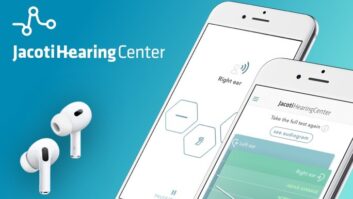NEW YORK – Apple did some more catching up with Android and Windows Phone in unveiling iOS9 to app developers, but an upgraded Watch OS and the new Apple Music subscription-streaming service unveiled at the developers conference could have a potentially more significant impact on the market, analysts said.
A rebooted Apple music-streaming service will be successful for a variety of reasons, including the Spotify-like ability to select individual songs to stream, they said. Another key reason is the ease with which consumers will be able to sign up for the $9.99/month Apple Music service, given that Apple already has the credit-card numbers of the millions of people who’ve already downloaded iTunes store content, said Gartner VP Van Baker.
A big Apple Music success, vendors said, could pressure suppliers of wireless multiroom-audio systems to add AirPlay so users could stream Apple Music from iPhones and computers to their systems. Many networked audio/video receivers already feature AirPlay, as does Bose’s multiroom-speaker system. To date, “Apple has not released an API for integration or made any plans public” to enable wireless multiroom-audio systems to access Apple Music, said one supplier.
Although Apple promised to offer an Apple Music app in the fall for Android mobile devices, it’s also not certain whether Apple will enable Google Cast for Audio capability, which would enable Apple Music content to be cast to one or more Cast-enabled speakers at a time. Alternately, consumers could stream Apple Music from a smartphone to a Bluetooth-equipped multiroom Wi-Fi speaker for playback in a single room. A handful of Wi-Fi/Bluetooth speakers will retransmit that stream over Wi-Fi to other rooms.
Apple Watch: With an upgrade to the Watch OS, Apple Watches could expand their appeal, thanks in large part to the ability to run native apps without a Bluetooth connection to an iPhone. Apple Watch will also be able to use Wi-Fi to communicate with the Cloud without going through an iPhone.
The WatchOS upgrade to support native apps “is a very significant step,” said Todd Day, senior industry analyst for Frost & Sullivan. “While it may not add as many features to the watch in the first iteration using the new WatchOS and native apps, it will definitely open the door to the future of smart watches and other wearable technologies.”
In the case of HomeKit apps for the Watch, for example, users will be able to trigger home-automation actions whether carrying their iPhone or not. Health apps could monitor the Watch’s sensors and display information without a tethered iPhone.
HomeKit advances: HomeKit home automation also made strides, marketers said. Apple extended HomeKit control to motorized windows and shades, sensors such as carbon monoxide and motion sensors, and home security systems. Smart plugs, lighting, thermostats, door locks and other products are currently supported.
The company is also giving developers more flexibility in creating home-automation scenes. A specific scene could be activated when a user gets home from work, but only before a specific time, and an entirely different scene could be triggered after a specific time. HomeKit apps will also be supported on the Apple Watch, and remote access to HomeKit devices in a home will be available without using an Apple TV as a gateway.












